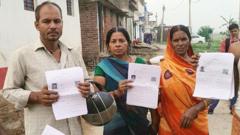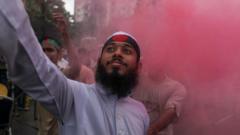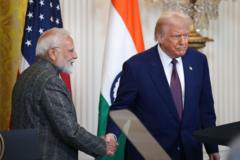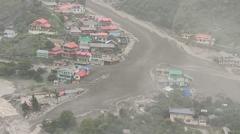Indira Gandhi's declaration of Emergency in June 1975 suspended civil liberties and concentrated power, revealing the vulnerabilities within India's democratic framework. While some viewed this period as a time of order, others recall the harsh measures and societal impacts that marked a significant regression from democratic ideals.
Revisiting the Emergency: A Dark Chapter in India's Democratic History

Revisiting the Emergency: A Dark Chapter in India's Democratic History
As India reflects on its past, the Emergency declared by Indira Gandhi in 1975 remains a crucial lesson in the fragility of democracy.
At midnight on June 25, 1975, India, a vibrant and burgeoning democracy, underwent a seismic shift. The then-Prime Minister Indira Gandhi declared a nationwide Emergency, effectively freezing civil liberties, jailing opposition leaders, censoring the press, and extending the powers of the executive unchecked by judicial oversight. Officially, the nation remained a democracy; in practice, however, it functioned under a veil of authoritarianism that lasted for 21 months.
The impetus for this drastic move stemmed from a ruling by the Allahabad High Court that invalidated Gandhi's 1971 election victory due to findings of electoral misconduct. Facing disqualification and mounting public protests led by socialist leader Jayaprakash Narayan, Gandhi invoked Article 352 of the Indian Constitution, justifying the Emergency with claims of national instability.
Historian Srinath Raghavan notes that the constitution permitted a range of emergency powers, yet the resulting consolidation of executive authority lacked necessary judicial oversight. During this period, over 110,000 individuals were detained—political opponents and activists were among those imprisoned, while dissent was met with increased repression. Uttar Pradesh recorded the highest number of detentions, with courts failing to uphold the fundamental rights of citizens—a grim reality that Raghavan highlights.
The Emergency's impact was profoundly felt through a controversial family planning initiative that coerced around 11 million Indians into sterilization, perceived largely as orchestrated by Sanjay Gandhi, Indira's unelected son. Torturous practices and aggressive pressure characterized the program, and poor communities suffered disproportionately. Severe violence erupted during mass slum demolitions that forcibly relocated 700,000 people, with tragic incidents of police brutality.
In tandem with these measures, the media faced sweeping censorship—with newspapers silenced and critical voices silenced or forced to conform to strict government guidelines. The environment of fear and control stifled journalistic inquiry, leading to unprecedented media blackout orders. Foreign journalists faced expulsion for refusing to comply with censorship, illustrating the extent to which dissent was curtailed.
Despite its oppressive nature, some narratives argue the Emergency also instilled a brief period of order, marked by economic stability and a reduction in social unrest. While strikes sharply declined, industrialists praised the regime for fostering a climate conducive to business growth following years of stagnation. Yet opposition to the Emergency manifested in civil resistance led by figures like Jayaprakash Narayan.
Ultimately, the Emergency concluded in March 1977 when elections were called, with Gandhi's Congress Party facing defeat. The newly elected Janata government repealed many of the oppressive laws; however, historians contend that the damage to India's democratic fabric was significant. Critics warn that framing the Emergency as an aberration may prompt complacency, neglecting the underlying vulnerabilities in democratic institutions.
As indelible lessons emerge from this dark chapter, it serves as a cautionary tale regarding the fragility of democracy, especially in the face of overwhelming power. The Emergency remains a poignant reminder of the imperative to safeguard civil liberties and maintain checks on authority to ensure the continued health of democratic principles.





















